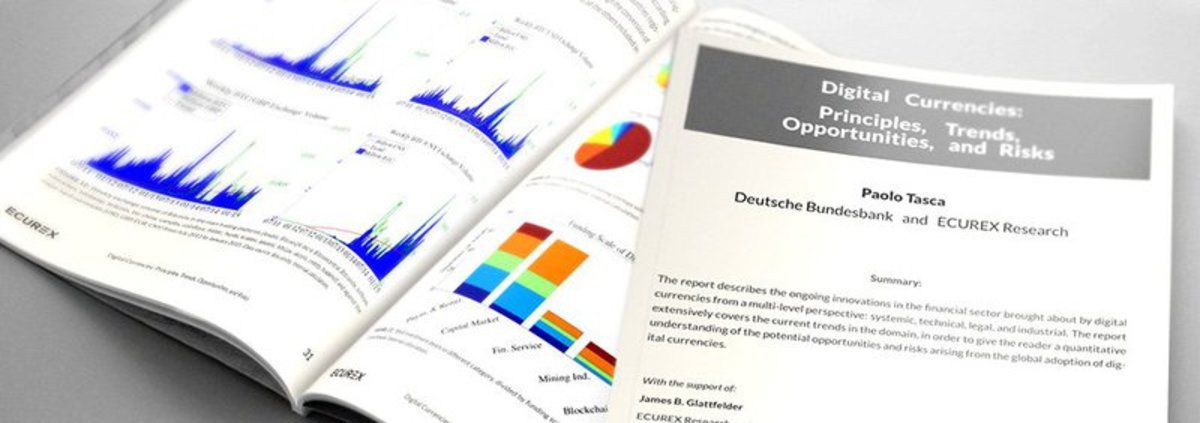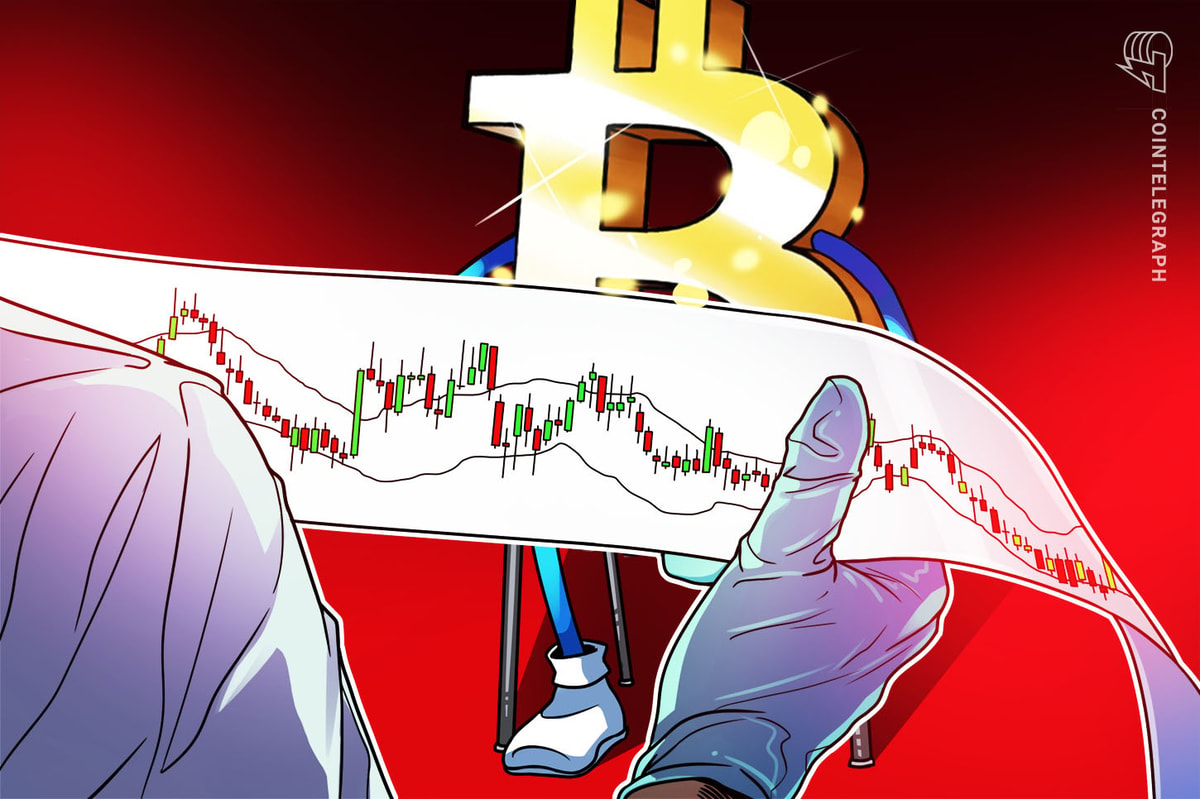
Today ECUREX, a digital finance marketplace for professional traders and financial institutions headquartered in Zurich, is publishing a comprehensive 110-page report on digital currencies – an ECUREX Research Working Paper titled “Digital Currencies: Principles, Trends, Opportunities, and Risks.”
In June, Bitcoin Magazinereported that ECUREX was the first digital currency exchange platform to be fully compliant with the Swiss Banking Act and Anti-Money Laundering (AML) Ordinance. Now, with the permission of ECUREX, Bitcoin Magazine is publishing some excerpts of the new report before it’s publicly released.
The report is authored by Paolo Tasca, research economist at Deutsche Bundesbank and founder of ECUREX, with the support of ECUREX researchers James B. Glattfelder and Nicolas Perony, who also work, respectively, at the University of Zurich and Tamedia Digital. The document represents the author’s personal opinions and does not necessarily reflect the views of the Deutsche Bundesbank or its staff.
“The report is very interdisciplinary and aims at talking to technologists who want to know more about economic and legal aspects of digital currencies or economists and lawyers who want to know more about technical aspects,” Tasca told Bitcoin Magazine. “We think that the report should arrive not only on the desks of executives, but instead it should arrive to the desks of everyone interested in the topic. Thus we decided to put it online available to be downloaded by everyone for free. …[I]t will be online on the ECUREX website.”
The report describes the ongoing innovations in the financial sector brought about by digital currencies from a multi-level perspective: systemic, technical, legal and industrial. The document extensively covers the current trends in the domain in order to give the reader a quantitative understanding of the potential opportunities and risks arising from the global adoption of digital currencies. The ECUREX report, which is the result of more than two years of work involving the collection and analysis of data from more than 30 different sources, is the first comprehensive study on digital currencies that provides a joint, deep quantitative analysis of their technological, entrepreneurial, economic and legal aspects.
“Our goal is to reach the broader possible audience of students and practitioners,” said Tasca. “We hope that the digital currency market report will become their guide and roadmap that will assist them to navigate the complex and evolving Bitcoin ecosystem. The idea of producing a digital currencies market report started already when I was working as Research Officer at the London School of Economics (around November 2013) before joining the Deutsche Bundesbank.
“At that time I was still mostly working on systemic risk in financial markets, but I perceived and understood the revolution that digital currencies and blockchain technologies would have brought to our socio-economic systems,” he said. “Thus, I felt the importance and the need to promote the knowledge of digital currencies and P2P financial systems (more in general) to the broader audience of students, academics and practitioners as much as possible.“
“After two years of work, now I am even more convinced that blockchain technologies will change forever the way we do business (not only in finance).”
Section 1.3 of the paper, “Key Findings,” is reproduced below with the permission of ECUREX.
The most important key findings are summarised here. For the original research and details on the data sources, see the corresponding sections in the main text.
The average amount transferred per Bitcoin transaction is larger than in any other major payment network. During the period 2011–2015, the average amount (in USD equivalent) per transaction constantly increased, and remained larger than in the major payment networks such as Visa, Mastercard, Discover, or Western Union. Although the Bitcoin payment network is getting closer in total transaction volume to these large networks, its daily transaction volume of ca. USD 50 million (about one quarter of Western Union’s) is still the lowest one.
The relative capitalisation of Bitcoin with regard to other digital currencies is receding in favour of Ripple’s. Until mid-2014, Bitcoin dominated the digital currency market by covering up to 95 of its total volume. Since then, its dominant position has been eroded by Ripple, which now covers about 10 of the total market capitalisation. On average, the relative currency strength of Bitcoin has decreased compared to that of the other (almost) existing 500 digital currencies, even though Bitcoin remains dominant on the digital currency market.
China is the largest country in the world per: (1) number of active Bitcoin clients; (2) mining capacity (since the end of 2014, Chinese mining pools cover 50 of the total market share); (3) volume of Bitcoins exchanged via electronic trading platforms (since 2014, the traded CNY/BTC volume in is about 3 times larger than the USD/BTC volume, with peaks at BTC 4 million per week).
Bitcoin startups raised almost USD 1 billion in three years with an annual investment growth rate of about 150. Capital investments in Bitcoin-related startups is a recent trend that started in the first quarter of 2012. Since then, the Bitcoin industry raised almost USD 1 billion and it represents the fastest growing sector for capital investment. Within the Bitcoin sector, the Mining and Payment & Remittance industries drove the funding race. Coinbase alone covered one third of the capital raised by the whole Payment & Remittance industry, and 21 Inc over half of the capital raised by the Mining industry.
In January 2015 the Bitcoin volume exchanged on electronic trading platforms reached 50 of the total number of Bitcoins ever mined at that time. At two points in mid-2014 and January 2015 the volume of Bitcoins exchanged via electronic trading platforms reached a historical high equivalent to over half of the number of Bitcoins that had been mined at that time. Since then, the volume of Bitcoins traded on electronic exchanges has remained stable at a higher value than the volume of transactions between users, recorded in the public Bitcoin blockchain.
During the year 2014, the transaction costs in digital currencies dropped significantly. Throughout 2014, the average fee per Bitcoin (Litecoin) transaction decreased from about USD 20 (7) cents to USD 10 (1) cents.
The year 2014 saw fewer incidences and less arbitrage opportunities than the previous years. In effect, the digital currency market is becoming more efficient. Since 2011, Bitcoin’s volatility has been constantly decreasing. In addition, the likelihood and intensity of arbitrage opportunities dramatically dropped to less than 1, signalling that the digital currency exchange markets are becoming more efficient.
The wealth distribution in the Bitcoin ecosystem is highly unequal, and this inequality is growing. The inequality of the distribution of Bitcoins amongst addresses, summarized by the Gini coefficient (higher is more unequal), grew from 0.09 in 2010 to 0.99 in 2015: from quasi-perfect equality to quasi-perfect inequality. However, this is not a “rich get richer” phenomenon. During the period 2009–2015, the top 100 richest addresses kept a constant relative wealth, totalling about 20 of the total value of the Bitcoin economy. The increase in the inequality is the result of: (1) a socio-economic phenomenon, due to the growing popularity of Bitcoin, and (2) wallet fragmentation due to security practices such as single-use addresses and new addresses generated for change transactions.
The Mining industry is consolidating as an oligopoly. The Bitcoin mining market is currently under control by 5 to 7 major mining pools. During the period 2013-2015, the cumulative market share of the largest 10 pools relative to the total market hovered in the 70–80 range.










